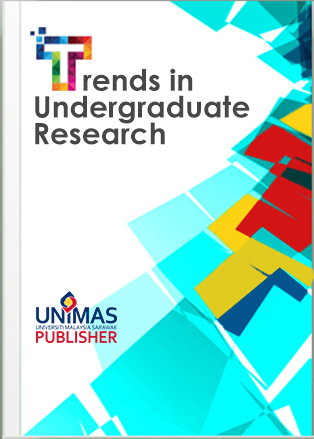Integrated Speed Bump Detector to notify road users using Internet of Things
DOI:
https://doi.org/10.33736/tur.2783.2021Keywords:
Internet of Things (IoT), speed bump detector, safety, road usersAbstract
Every year all over the world, many lives are lost due to accidents on the roads. Different factors have contributed to this tragic death, such as the poor condition of roads and bad weather such as rain. To solve this problem, an Integrated Speed Bump Detector to notify road users using the Internet of Things (IoT) has been proposed to help road users to detect speed bumps earlier by getting notified through sound from the buzzer and red light from an LED. This also increases the safety of road users during their trips and provides information if a speed bump is approaching. The ultimate goal of this project is to prevent an accident from occurring during road trips and to promote a careful attitude among road users.
References
ACPLM (2019). 5 Things You Didn't Know About Speed Bumps. https://www.acplm.net/5-things-didnt-know-speed-bumps/
Attia, H. A., Ismail, S., Alia, H. Y. (2016, December 6-8). Vehicle safety distance alarming system [Paper presentation]. 2016 5th International Conference on Electronic Devices, Systems and Applications (ICEDSA), Ras Al Khaimah, United Arab Emirates. https://www.researchgate.net/publication/312561167_Vehicle_safety_distance_alarming_syst
https://doi.org/10.1109/ICEDSA.2016.7818501
Khalil, U., Nasir, A., Khan, S. M., Javid, T., Raza, S. A., Siddiqui, A. (2018, November 1-2). Automatic Road Accident Detection Using Ultrasonic Sensor [Paper presentation]. 2018 IEEE 21st International Multi-Topic Conference (INMIC), Karachi, Pakistan. https://www.researchgate.net/publication/330030161_Automatic_Road_Accident_Detection_Using_Ultrasonic_Sensor
https://doi.org/10.1109/INMIC.2018.8595541
Muhaiyiddin, F., Sanudin, R., Wahab, M. H. A., Johari, A. (2009, April 3-5). Development of Digital Vehicle Distance Monitoring System [Paper presentation]. 2009 International Conference on Future Computer and Communication, Kuala Lumpur, Malaysia. https://www.researchgate.net/publication/261057061_Development_of_Digital_Vehicle_Distance_Monitoring_System
https://doi.org/10.1109/ICFCC.2009.90
Patel, M. Gundaliya, P. J. (2017). A study on Speed Breakers. International Journal of Advance Engineering and Research Development, 4(3), 368-372.
https://doi.org/10.21090/IJAERD.63450
Rapid Application Development (RAD): Changing How Developers Work. (2021, September 5). Low-Code. https://kissflow.com/low-code/rad/rapid-application-development/
Sueb, S. (2013, April 17-19). The Development Of Technology For Human Civilization. 3rd Annual Basic Science International Conference, Universitas Brawijaya Malang, Indonesia. https://www.researchgate.net/publication/282660350_The_Development_Of_Technology_For_Human_Civilization
Walter, M. (1997). Rapid Application Development. https://web.cs.dal.ca/~jamie/teach/WaltManer/RAD.htm#8
World Health Organization (2018). Road traffic injuries. https://www.who.int/news-room/fact-sheets/detail/road-traffic-injuries
Downloads
Published
How to Cite
Issue
Section
License
Copyright Transfer Statement for Journal
1) In signing this statement, the author(s) grant UNIMAS Publisher an exclusive license to publish their original research papers. The author(s) also grant UNIMAS Publisher permission to reproduce, recreate, translate, extract or summarize, and to distribute and display in any forms, formats, and media. The author(s) can reuse their papers in their future printed work without first requiring permission from UNIMAS Publisher, provided that the author(s) acknowledge and reference publication in the Journal.
2) For open access articles, the author(s) agree that their articles published under UNIMAS Publisher are distributed under the terms of the CC-BY-NC-SA (Creative Commons Attribution-Non Commercial-Share Alike 4.0 International License) which permits unrestricted use, distribution, and reproduction in any medium, for non-commercial purposes, provided the original work of the author(s) is properly cited.
3) For subscription articles, the author(s) agree that UNIMAS Publisher holds copyright, or an exclusive license to publish. Readers or users may view, download, print, and copy the content, for academic purposes, subject to the following conditions of use: (a) any reuse of materials is subject to permission from UNIMAS Publisher; (b) archived materials may only be used for academic research; (c) archived materials may not be used for commercial purposes, which include but not limited to monetary compensation by means of sale, resale, license, transfer of copyright, loan, etc.; and (d) archived materials may not be re-published in any part, either in print or online.
4) The author(s) is/are responsible to ensure his or her or their submitted work is original and does not infringe any existing copyright, trademark, patent, statutory right, or propriety right of others. Corresponding author(s) has (have) obtained permission from all co-authors prior to submission to the journal. Upon submission of the manuscript, the author(s) agree that no similar work has been or will be submitted or published elsewhere in any language. If submitted manuscript includes materials from others, the authors have obtained the permission from the copyright owners.
5) In signing this statement, the author(s) declare(s) that the researches in which they have conducted are in compliance with the current laws of the respective country and UNIMAS Journal Publication Ethics Policy. Any experimentation or research involving human or the use of animal samples must obtain approval from Human or Animal Ethics Committee in their respective institutions. The author(s) agree and understand that UNIMAS Publisher is not responsible for any compensational claims or failure caused by the author(s) in fulfilling the above-mentioned requirements. The author(s) must accept the responsibility for releasing their materials upon request by Chief Editor or UNIMAS Publisher.
6) The author(s) should have participated sufficiently in the work and ensured the appropriateness of the content of the article. The author(s) should also agree that he or she has no commercial attachments (e.g. patent or license arrangement, equity interest, consultancies, etc.) that might pose any conflict of interest with the submitted manuscript. The author(s) also agree to make any relevant materials and data available upon request by the editor or UNIMAS Publisher.

